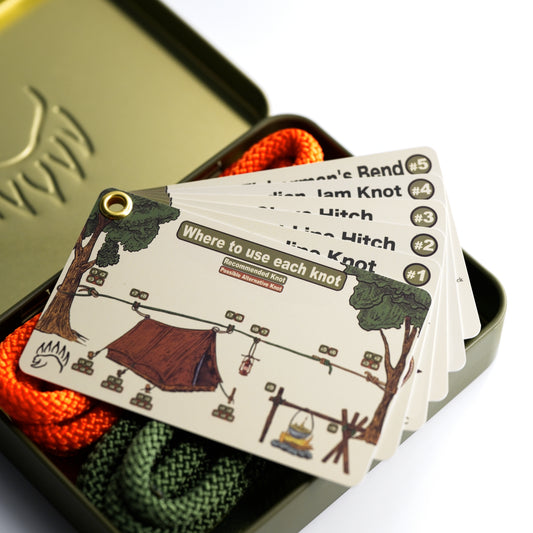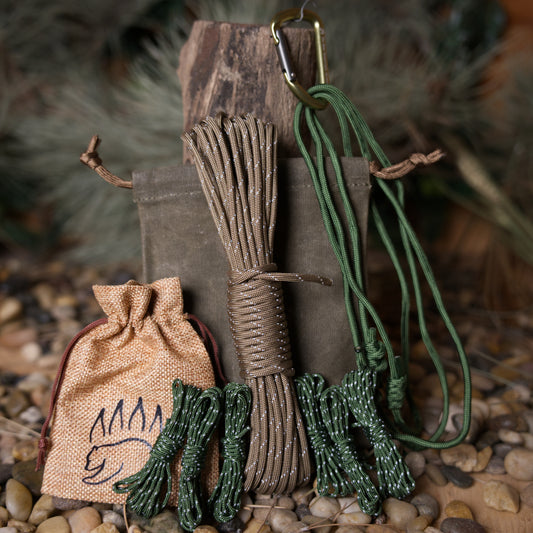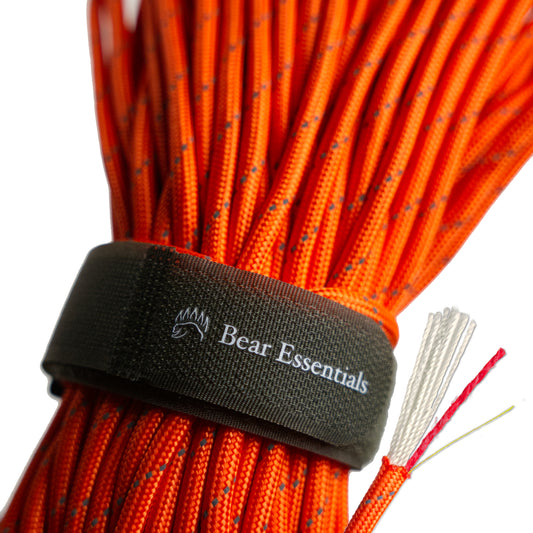How to Tie the Quick Hitch
Usage
The Quick Hitch is commonly used to join two ropes, particularly in arborist work for pulling up a secondary rope. Compared to the Slippery Sheet Bend, it releases instantly with a single pull, making it ideal for temporary ties. Its simple structure excels in boating for quick mooring, but it’s not suited for heavy or critical loads. This knot is valued for its speed and ease, though it may slip if not under constant tension.
Why Learn the Quick Hitch?
Its rapid-release design ensures quick and easy rope management. This knot is perfect for tasks requiring temporary, non-critical rope connections.
- Instant release: Unties with a single tug, ideal for quick setups.
- Simple to tie: Fast to learn and execute, even in a rush.
- Versatile use: Suits arborist, boating, or utility tasks.
- Minimal rope use: Requires little cord, keeping setups efficient.
- Non-jamming: Doesn’t bind, ensuring smooth release after use.
Common Uses
-
Boating/Marine
- Temporarily ties small boats to docks or posts.
- Secures lines for quick-release mooring tasks.
-
Utility
- Joins ropes for temporary bundling or pulling.
- Manages cords in workshops or outdoor setups.
ABOK Number
(Ashley Book of Knots)
Other Names
Category
|
Notable Features
- Quick to tie: Can be formed in seconds for instant use.
- Slipped release: Single pull loosens the knot immediately.
- Low-profile structure: Doesn’t bulk up, fits tight spaces well.
How to Tie
- Form a bight with the working end of the first rope.
- Pass the working end of the second rope through the bight from underneath.
- Create a bight with the second rope’s working end and pass it back through the first rope’s bight.
- Pull both standing ends to tighten the knot, keeping the bight loose for release.
- Tug the second rope’s bight to release the knot instantly.
Tips:
- Ensure the bight is large enough for easy pulling.
- Use smooth ropes to facilitate quick release.
- Keep slight tension on the knot to prevent slipping.
Variations
No true variations are listed in the provided knot index. For added security, tie a stopper knot on the working end to prevent accidental release.
Similar Knots
Slippery Sheet Bend vs. Quick Hitch
- Pros: Simpler to tie and widely known for joining unequal ropes.
- Cons: Requires unthreading, making it slower to release than the Quick Hitch.
Highwayman’s Hitch vs. Quick Hitch
- Pros: Releases instantly and suits temporary mooring tasks.
- Cons: Less secure under jostling, unlike the Quick Hitch’s stable structure.
History
The Quick Hitch, also known as the Slipped Lapp Knot, was first documented in the September 1996 issue of The Treeworker by the National Arborist Association, though its simplicity suggests multiple origins, possibly linked to the Lapp Knot used by Laplanders in Northern Scandinavia. Its structure mirrors traditional bends but is adapted for quick release, making it a favorite in arborist and marine contexts.
Source: The Tree Climber’s Companion, Jeff Jepson, Beaver Tree Publishing, 2000
Security Level
The Quick Hitch is reliable for temporary, non-critical tasks like pulling up a rope or mooring a small boat, provided it’s under constant tension. It’s not suitable for heavy loads or life-support applications, as it may slip without load. A stopper knot can enhance stability for slippery ropes.
Downsides
- Not load-bearing: Unsuitable for heavy or critical loads due to slipping risk.
- Tension-dependent: May loosen without constant pull, requiring attention.
FAQ
-
Is the Quick Hitch strong enough for heavy loads?
No, it’s designed for temporary, light tasks like joining ropes, not for heavy or critical loads. -
What ropes work best for the Quick Hitch?
Smooth, flexible ropes like nylon or polyester ensure easy tying and quick release. -
How does the Quick Hitch compare to the Slippery Sheet Bend?
It releases faster with a single tug, while the Sheet Bend needs unthreading. -
Can the Quick Hitch be used for climbing?
No, it’s not safe for climbing or any life-support applications due to its slipping risk. -
Why choose the Quick Hitch over the Highwayman’s Hitch?
It’s more resistant to jostling and feels more secure for temporary rope joins.
Important Notes on Safety
- Common failure points include using the Quick Hitch for heavy loads or without constant tension, leading to slipping.
- Always verify it’s used only for temporary, non-critical tasks.
- Check ropes for wear before tying to avoid breakage.
- Ensure the knot is under slight tension to maintain grip.
- Practice tying and releasing in low-risk settings first.









